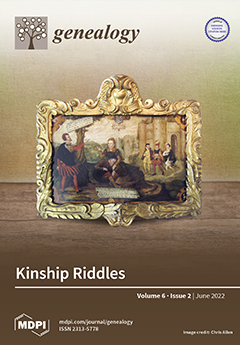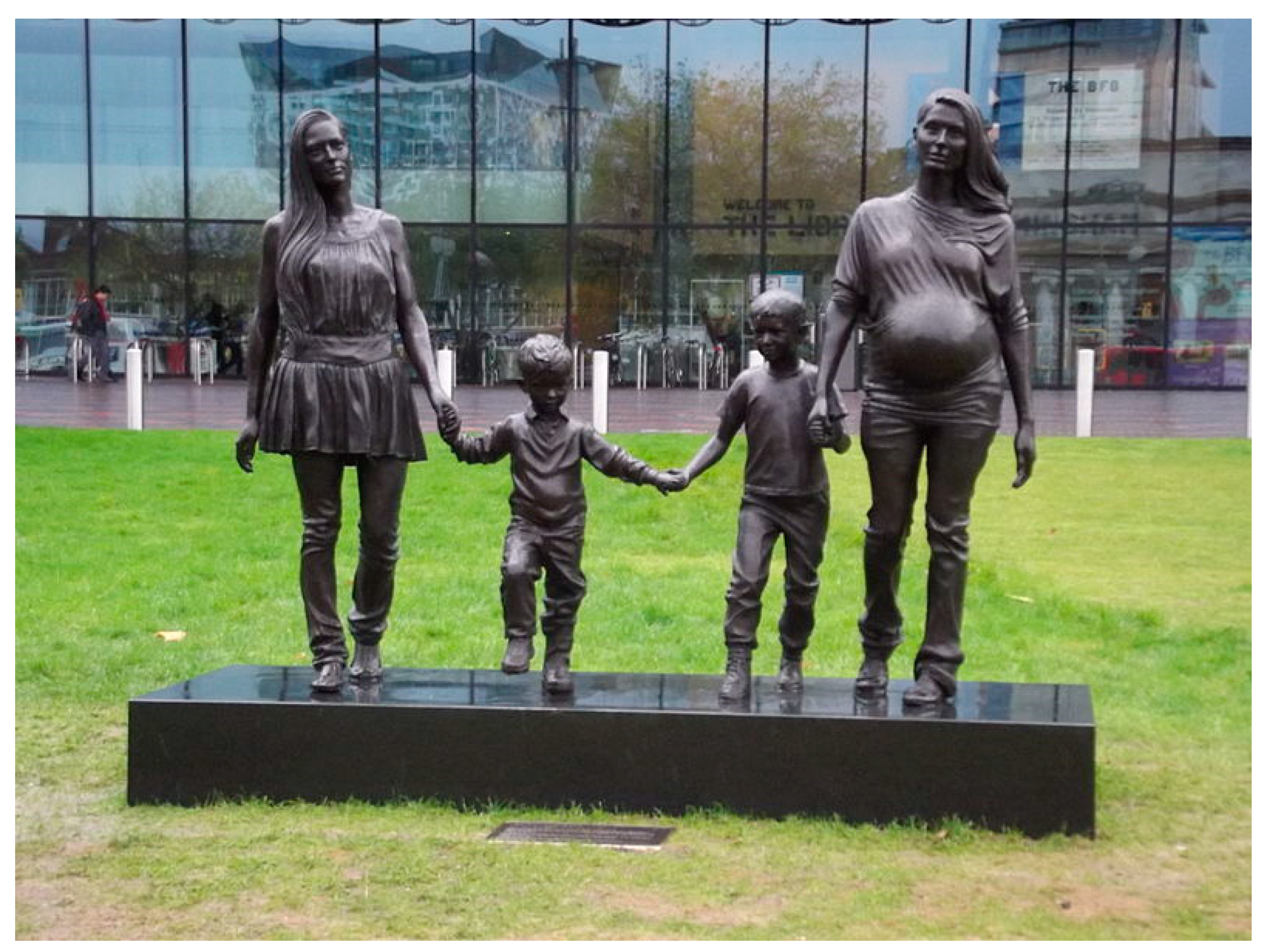Special Issue “Beyond the Frontiers of Mixedness: New Approaches to Intermarriage, Multiethnicity, and Multiracialism”
Genealogy
2021-04-14
Abstract Deadline: 2021-05-31
Manuscript Submission Deadline: 2021-11-30
Professor Dr. Dan Rodriguez-Garcia, Guest Editor and Serra Húnter Associate Professor
Autonomous University of Barcelona, Barcelona, Spain

Dear colleagues,
This Special Issue of Genealogy invites essays on the topic of “Beyond the Frontiers of Mixedness: New Approaches to Intermarriage, Multiethnicity, and Multiracialism.”
Deadline for manuscript submissions: 30 November 2021.
The field of mixed-race studies has experienced an incredible expansion since the pivotal work of Paul Spickard (1989) and Maria Root (1992, 1995). In the last three decades, we have witnessed numerous publications in this area of study, including edited collections and special issues, which have advanced our knowledge of “mixedness,” an encompassing concept that refers to mixed unions, families, and individuals across national, ethnocultural, racial, religious, and class boundaries as well as to the sociocultural processes involved (Rodríguez-García 2015). As the super-diversification of societies continues, the ever-growing research interest in mixedness can be attributed to scholars’ understanding that such an area of study both reveals existing social boundaries and shows how societies are being transformed. Mixedness can be understood to have a transformative potential in the sense that it disturbs, contests, and may reinvent social norms and established identity categories.
While intermarriage is on the rise and multiracial and multiethnic populations continue to grow worldwide, there are still many areas in which our knowledge of mixedness is limited or nascent. This Special Issue aims to expand our understanding of this complex phenomenon by exploring a variety of under-researched issues in the field, by seeking out research on untrodden topics and implications, and by employing innovative analytical approaches.
This Special Issue is intended to be broad in scope and welcomes innovative contributions across disciplines in the social sciences that may be theoretical or empirically based and that address—but are not limited to—one or more of the following topics:
- New conceptualizations of mixedness, intermarriage, and multiracialism;
- Mixedness beyond race: ethnicity, religion, gender, sexual orientation, age, class, micro-locations;
- Intersectional analyses of mixedness;
- New methods and mixed methods applied to the study of mixedness;
- Mixedness and statistics: the challenge of counting and categorizing intermarriage and mixed people;
- Comparative (inter-local/international/inter-continental) analyses of mixedness, including outside European and English-speaking settings;
- Decentering and decolonizing mixedness: multiracial and multiethnic identity formations outside of white-centric constructions;
- Mixedness in super-diverse contexts;
- New forms of cosmopolitanism and creolization;
- Mixedness and the reconceptualization of majority/minority meanings (reshaping the mainstream);
- Mixedness in highly segmented societies;
- Mixedness and religion: interfaith couples, families, and individuals;
- Mixedness, racialization, color blindness, and post-racialism;
- Mixedness and colorism: intraracial discrimination and horizontal hostility;
- Multiracial identifications for understanding racial formation;
- Ethnoracialism: multiracialism and multiethnicity as different or complementary processes;
- Mixedness, discrimination, and resilience/agency;
- Mixedness and whiteness (white privilege, white identities);
- Mixed-race privilege;
- Mixedness and (in)visibility;
- Contextual, multiform, translocational, malleable and shifting mixed identities: fixities and fluidities;
- Kinning in mixed families: raising and socializing multiracial and multiethnic children; inter-generational changes and continuities;
- Multiracial parents of multiracial children;
- Queer, LGBTQ+, same-sex, and transgender interracial and interethnic unions/families;
- Mixed-race masculinities;
- Mixedness and indigenous groups;
- Mixedness involving national ethnic minorities;
- Transracial adoption;
- Mixedness and the impact of COVID-19 (e.g., transnational reconfigurations, discrimination);
- Mixedness and cyberspace (i.e., online identity narratives, dating preferences, and relationships across race and ethnicity);
- Bridging the research-policy divide: working on mixedness with policymakers and third-sector practitioners.
This Special Issue is also interested in contributions that use novel analytical perspectives and methodologies, whether quantitative or qualitative or a combination of both.
For more information, click here.





